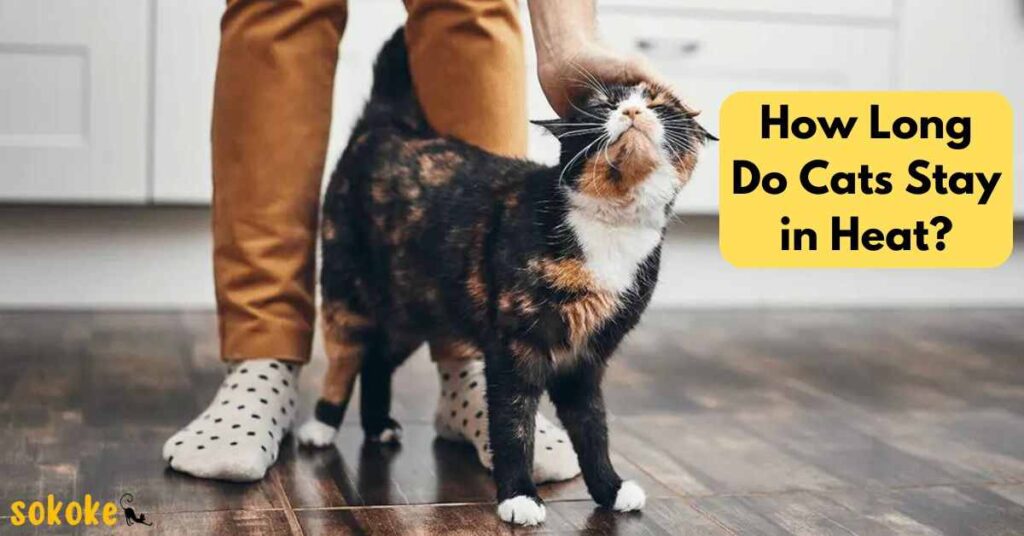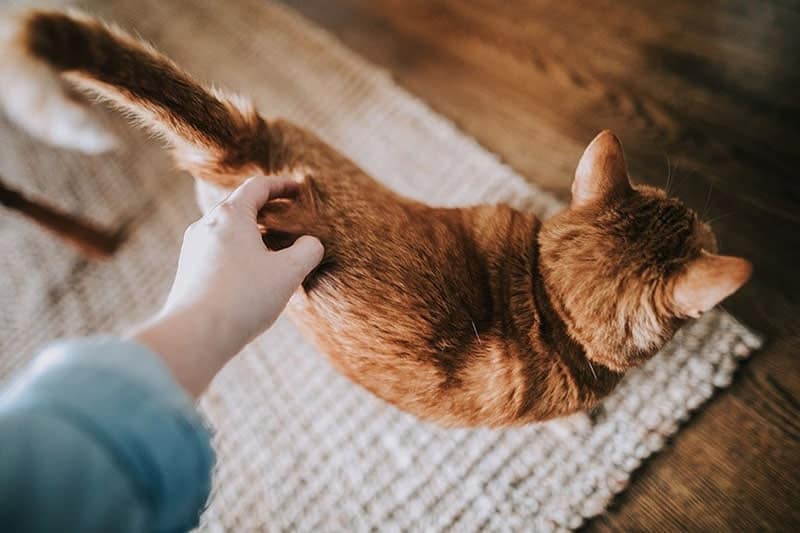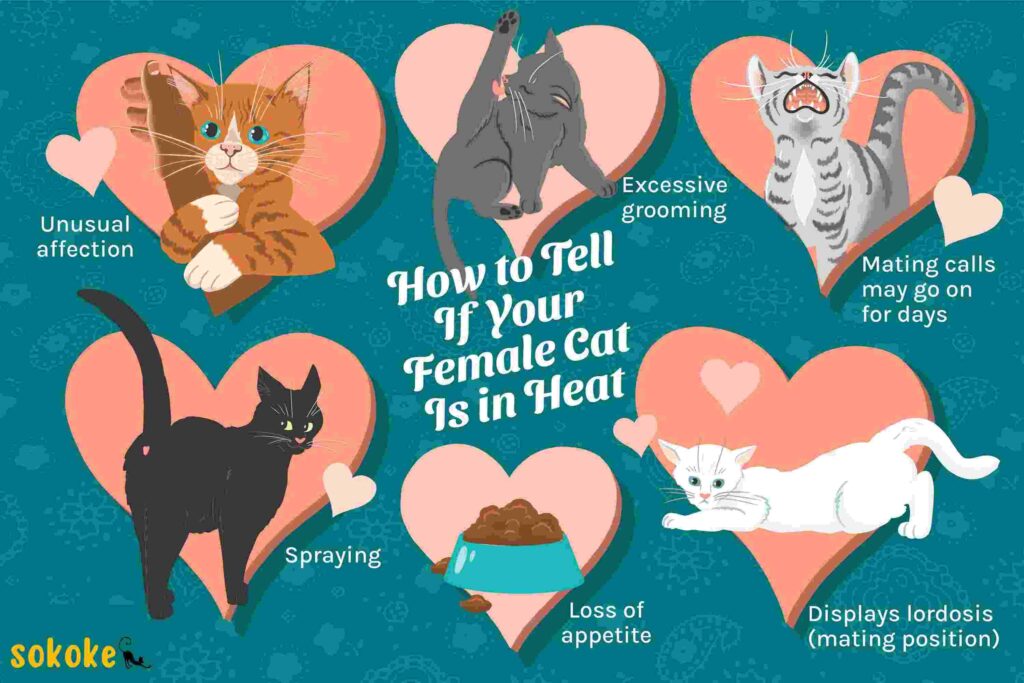
Welcome to our comprehensive guide on understanding cat heat cycles, focusing on the key question, “how long do cats stay in heat” In this article, we delve into the various stages of a cat’s heat cycle, the signs to look out for, and essential tips for managing and caring for cats during this natural reproductive phase. Whether you’re a new cat owner or looking to deepen your knowledge on feline reproductive health, this guide aims to provide valuable insights to ensure the well-being of your furry companions.
Table of Contents
How Long Do Cats Stay in Heat?
Cats can stay in heat for varying durations, typically ranging from 4 to 10 days. However, this period can extend up to several weeks in some cases. The length of a cat’s heat cycle depends on various factors such as age, breed, health, and environmental conditions.
Factors Affecting Heat Duration:
| Factors | Influence on Heat Duration |
| Age of the Cat | Younger cats may have shorter heat cycles compared to older cats. |
| Breed | Certain breeds may have longer or more frequent heat cycles. |
| Health | Health issues or hormonal imbalances can affect heat cycle length. |
| Environmental Conditions | Changes in environment or presence of male cats can impact heat cycles. |
What Happens When Cats Are In Heat?
Understanding the different stages of a cat’s heat cycle is crucial to comprehending their behavior and reproductive processes. Here are the main stages:

1. Proestrus
During the proestrus stage, which lasts around 1-2 days, female cats exhibit initial signs of being in heat. These signs include restlessness, increased vocalization, and frequent urination.
More on Proestrus:
- Cats may become more affectionate during this stage.
- They may display signs of seeking attention and rubbing against objects or people.
2. Estrus
Estrus is the main heat phase lasting 4-10 days, during which female cats are fertile and actively seek mating. Behavioral changes during estrus include yowling, rolling on the floor, and presenting their hindquarters.
More on Estrus:
- Cats may exhibit behaviors such as rolling, kneading, and increased grooming.
- Some cats may display more territorial behavior during this phase.
3. Interestrus or Metestrus
This is the period between heat cycles when the cat is not in heat. It can last anywhere from 1-3 weeks.
More on Interestrus:
- Cats in this phase often return to their normal behavior and may be less vocal.
- This period allows the cat’s body to rest before the next heat cycle.
4. Anestrus
Anestrus is the longest stage of the feline heat cycle and refers to the period when the cat is not in heat and is not actively seeking mating. This phase can last for several weeks to several months, depending on various factors such as the cat’s age, breed, and environmental factors.
More on Anestrus:
- Anestrus is a crucial phase for the cat’s reproductive system to rest and reset.
- Hormone levels return to baseline during this time, preparing the body for the next heat cycle.
5. Luteal/Diestrus
The luteal or diestrus phase occurs after estrus when the cat has not become pregnant. During this phase, the cat’s body prepares for a potential pregnancy by maintaining elevated hormone levels. If pregnancy does not occur, the luteal phase transitions into anestrus, and the cycle begins again.
More on Luteal/Diestrus:
- This phase is essential for the cat’s body to prepare for pregnancy or return to normal hormonal levels.
- Cats may display nesting behaviors or changes in appetite during this phase.
At What Age Do Cats Go into Heat?
Cats reach sexual maturity and can go into heat as early as 4-6 months old, although this can vary depending on the individual cat and its breed. Some breeds, such as Siamese cats, may go into heat as early as 4 months, while others may not enter their first heat until they are 10-12 months old.
Factors Affecting Age of First Heat:
- Breed: Different cat breeds reach sexual maturity at different ages.
- Environment: Environmental factors such as daylight length can influence the onset of heat cycles.
- Health: Cats in good health may enter heat earlier compared to those with health issues.
Early Heat Cycles and Considerations
1. Health Implications: Cats that go into heat at a very young age may face health risks if they become pregnant. It’s important to consider early spaying or neutering to prevent complications.
2. Behavioral Changes: Young cats in heat may exhibit more pronounced behavioral changes, which can be challenging for both the cat and the owner.
3. Consulting a Veterinarian: Discussing the optimal timing for spaying or neutering with a veterinarian can ensure the cat’s well-being and prevent unwanted pregnancies.
Delayed Heat Cycles
Some cats may experience delayed onset of heat cycles, which can be influenced by factors such as:
- Nutritional status
- Stress levels
- Hormonal imbalances
- Breed-specific characteristics
Understanding the age at which cats typically go into heat can help pet owners prepare for potential behavioral changes and make informed decisions about their cat’s reproductive health.
How Often Do Cats Go into Heat?
Cats are known for their frequent heat cycles, especially during the breeding season, which typically occurs from spring to fall. Female cats can go into heat as often as every 2-3 weeks during this time, although this can vary depending on factors such as breed, age, and individual differences.
Factors Influencing Heat Cycle Frequency:
1. Breed: Some breeds, such as Siamese and Abyssinian cats, may have more frequent heat cycles compared to others.
2. Environmental Factors: Changes in daylight length and temperature can affect heat cycle frequency.
3. Health Status: Cats in good health may have more regular heat cycles compared to those with underlying health issues.
Managing Frequent Heat Cycles
1. Spaying and Neutering: The most effective way to manage frequent heat cycles is through spaying and neutering, which eliminates the ability to reproduce.
2. Hormonal Regulation: Certain medications or hormonal treatments may be prescribed by a veterinarian to regulate heat cycles in specific cases.
3. Environmental Management: Providing a calm and stress-free environment can help reduce the frequency of heat cycles in some cats.
Variations in Heat Cycle Frequency
While the average frequency of heat cycles is every 2-3 weeks, some cats may have irregular heat cycles or variations in frequency due to factors such as:
- Hormonal imbalances
- Pregnancy or recent birth
- Stress or environmental changes
Monitoring your cat’s heat cycle frequency and consulting with a veterinarian can help address any concerns and ensure optimal reproductive health.
What Are The Signs A Cat Is In Heat?

Recognizing the signs that indicate a cat is in heat can help pet owners understand their pet’s needs and behavior. Here are some common signs to look out for:
1. Vocalization: Female cats in heat often become more vocal, with increased yowling or meowing, especially during the night.
2. Restlessness: Cats in heat may exhibit restless behavior, pacing around more than usual and seeming agitated.
3. Increased Affection: Some cats become more affectionate during heat, seeking more attention and physical contact.
4. Rolling and Kneading: Female cats may roll on the floor and knead their paws, especially around objects or people they perceive as potential mates.
5. Spraying or Marking: Unspayed female cats may spray urine to mark their territory, especially if they detect male cats nearby.
6. Elevated Tail Position: Cats in heat may hold their tails in a raised and slightly to the side position, signaling their readiness to mate.
Additional Signs and Behaviors During Heat:
- Increased Grooming: Some cats may groom themselves more frequently during heat.
- Seeking Escape: Cats in heat may try to escape the house or yard to seek a mate.
- Changes in Appetite: Heat cycles can sometimes affect a cat’s appetite, either increasing or decreasing food intake.
Behavioral Variations:
It’s important to note that not all cats exhibit the same signs during heat, and individual variations in behavior may occur. Some cats may show only subtle signs, while others may display more pronounced behaviors.
Understanding these signs and behaviors can help cat owners provide appropriate care and support during their pet’s heat cycle.
What Should You Do If Your Cat Is In Heat?
Managing a cat in heat involves understanding their needs and behavior to ensure their well-being and prevent unwanted pregnancies. Here are some essential steps to take if your cat is in heat:
Preventing Heat in Cats
1. Spaying: The most effective way to prevent heat cycles in female cats is through spaying, which removes the ovaries and eliminates the ability to reproduce.
2. Neutering: Neutering male cats can also prevent mating behaviors and reduce the likelihood of unwanted litters.
3. Consulting a Veterinarian: Discussing options with a veterinarian can provide insights into the best approach for your cat’s specific situation.
Early Spaying and Neutering Benefits:
- Health Benefits: Spaying and neutering can reduce the risk of certain reproductive cancers and infections.
- Behavioral Benefits: Altered cats are often calmer and less prone to mating behaviors such as spraying or roaming.
- Population Control: Preventing unwanted litters contributes to reducing the number of homeless cats.
Do Cats Bleed When in Heat?
Contrary to popular belief, cats do not typically bleed during their heat cycles. Instead, they may have a discharge that is often clear or slightly bloody, but this is not the same as menstrual bleeding in humans.
Understanding Heat Discharge:
- Heat discharge in cats is a natural part of the reproductive cycle and should not be a cause for concern unless it becomes excessive or has a foul odor.
- Monitoring your cat’s discharge during heat can help detect any abnormalities that may require veterinary attention.
Common Myths About Cat Heat Cycles
There are several myths and misconceptions surrounding cat heat cycles. Some common ones include:
Myth: Cats must have at least one litter before being spayed.
Fact: There is no medical requirement for cats to give birth before spaying. In fact, spaying before the first heat cycle can prevent various health issues and unwanted pregnancies.
Myth: Allowing a cat to have a litter improves their temperament.
Fact: The temperament of a cat is not determined by whether they have had a litter. Spaying or neutering can actually reduce certain behavioral issues associated with mating behaviors.
Can I Spay My Cat While In Heat?
Yes, it is possible to spay a cat while she is in heat, although some veterinarians may prefer to wait until the heat cycle has ended for optimal surgical conditions. It’s essential to consult with a veterinarian to determine the best timing for spaying based on your cat’s health and circumstances.
Surgical Considerations:
While spaying during heat is possible, there may be increased risks of bleeding during surgery. Your veterinarian will assess the situation and make recommendations accordingly.
Discussing the benefits and potential risks of spaying during heat with your veterinarian can help make an informed decision for your cat’s health.
Conclusion: How Long Do Cats Stay in Heat?
In conclusion, understanding “how long do cats stay in heat” is crucial for pet owners to ensure the well-being and reproductive health of their feline companions. By recognizing the signs, stages, and frequency of heat cycles, cat owners can take proactive measures such as spaying or neutering to prevent unwanted pregnancies and manage behavioral changes associated with heat. Consulting with a veterinarian for personalized advice and timely interventions is key to providing optimal care during a cat’s heat cycle. With this knowledge, cat owners can create a safe and comfortable environment for their pets, fostering a harmonious relationship and promoting a healthy life for their furry friends.
Frequently Asked Questions (FAQs)
Q: Do cats bleed when they are in heat?
Cats do not typically bleed during their heat cycles. Instead, they may have a discharge that is often clear or slightly bloody, but this is not the same as menstrual bleeding in humans.
Q: Can I spay my cat while she is in heat?
Yes, it is possible to spay a cat while she is in heat, although some veterinarians may prefer to wait until the heat cycle has ended for optimal surgical conditions. It’s essential to consult with a veterinarian to determine the best timing for spaying based on your cat’s health and circumstances.
Q: At what age do cats go into heat?
Cats reach sexual maturity and can go into heat as early as 4-6 months old, although this can vary depending on the individual cat and its breed. Some breeds, such as Siamese cats, may go into heat as early as 4 months, while others may not enter their first heat until they are 10-12 months old.
Q: How often do cats go into heat?
Cats are known for their frequent heat cycles, especially during the breeding season, which typically occurs from spring to fall. Female cats can go into heat as often as every 2-3 weeks during this time, although this can vary depending on factors such as breed, age, and individual differences.
Q: What are the signs that indicate a cat is in heat?
Signs that indicate a cat is in heat include increased vocalization (yowling or meowing), restlessness, increased affection-seeking behavior, rolling and kneading, spraying or marking, and an elevated tail position.
